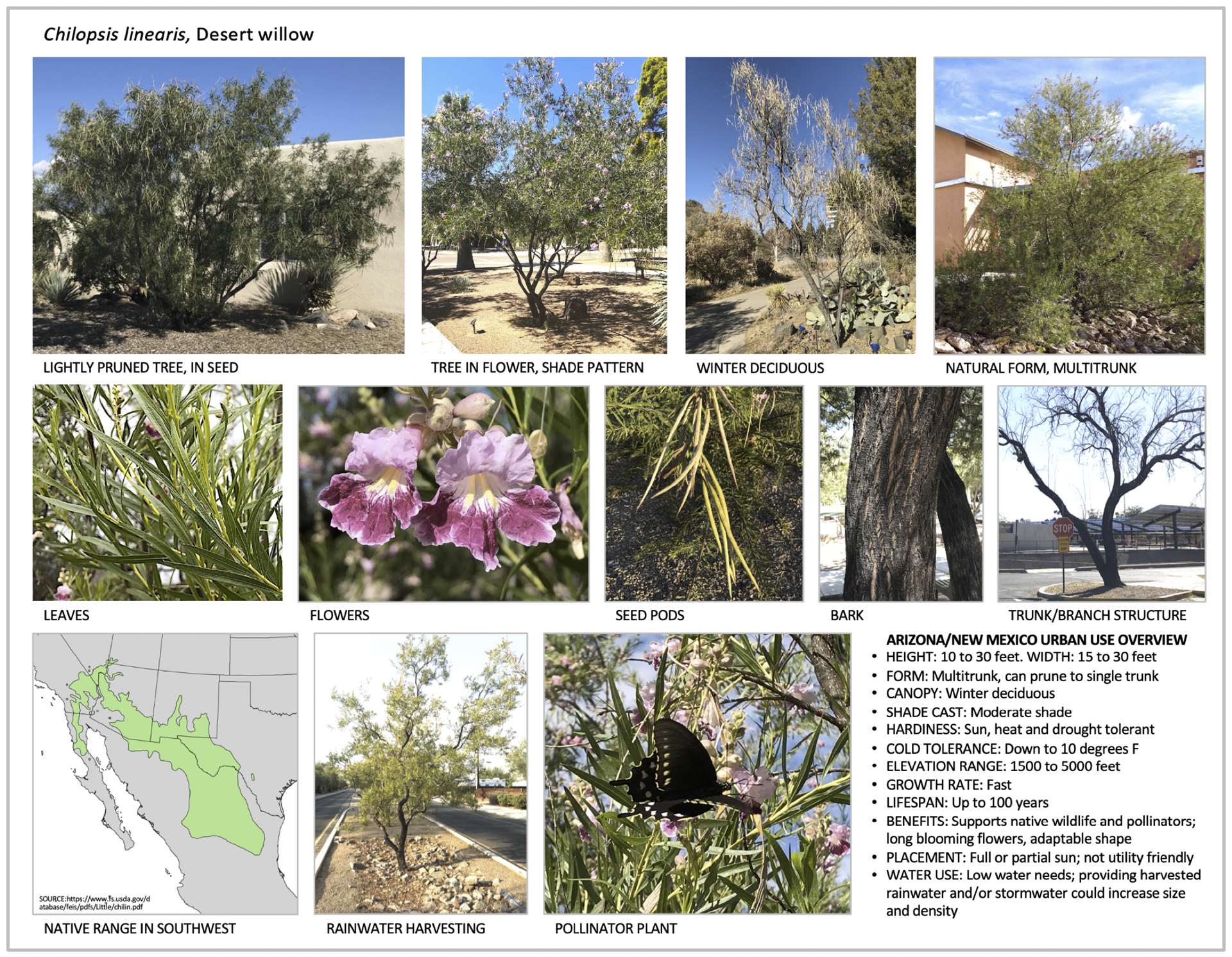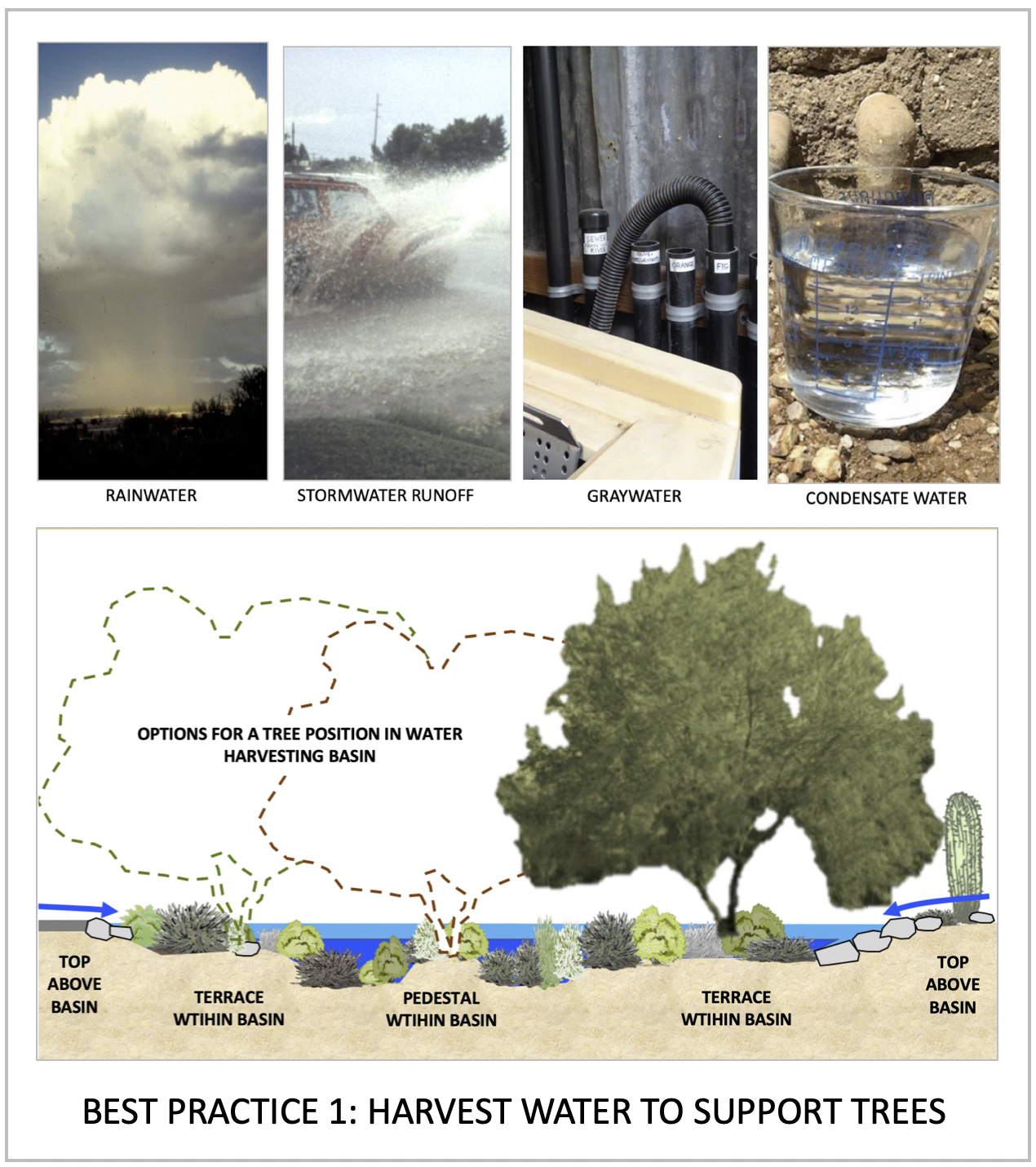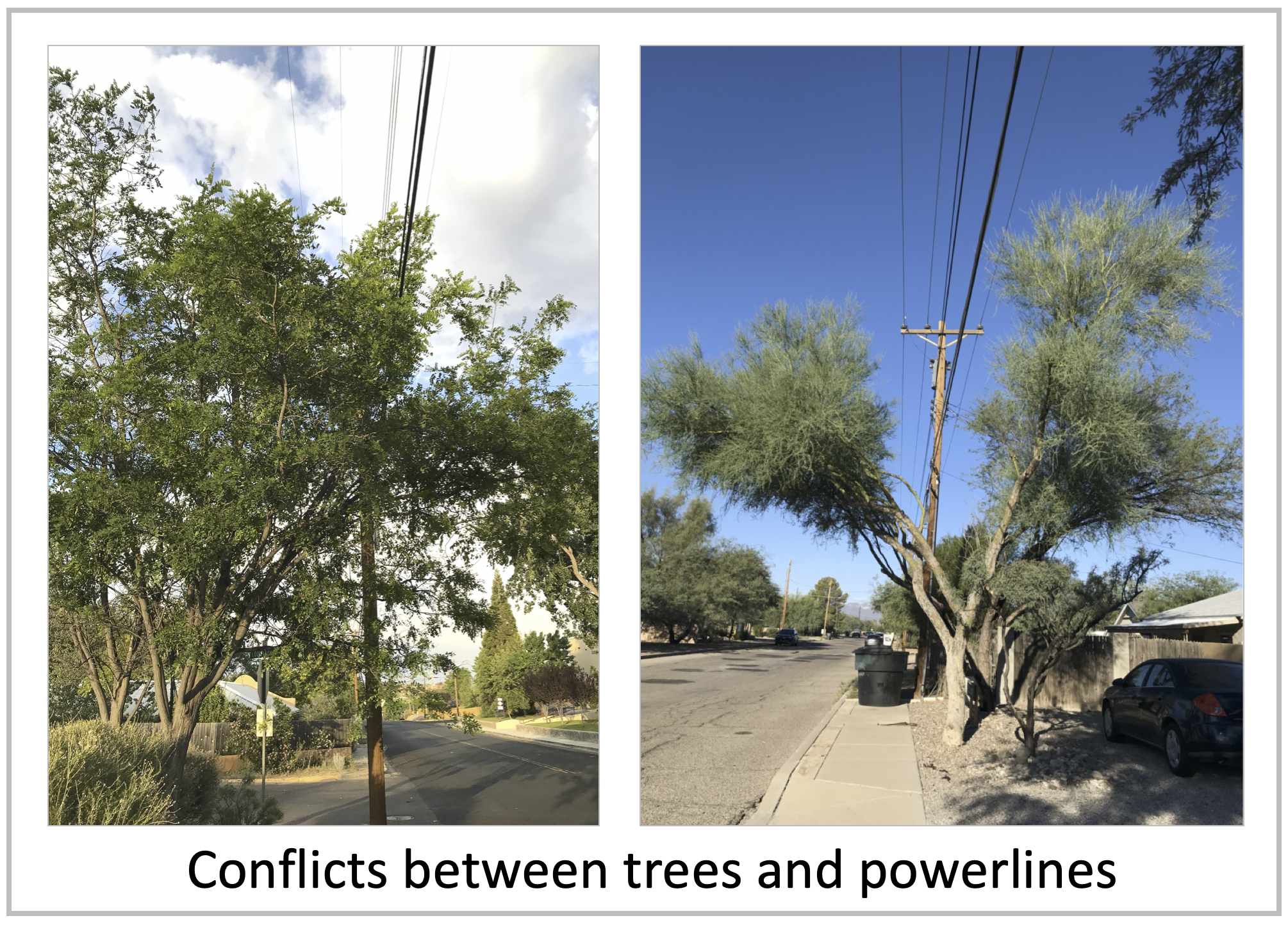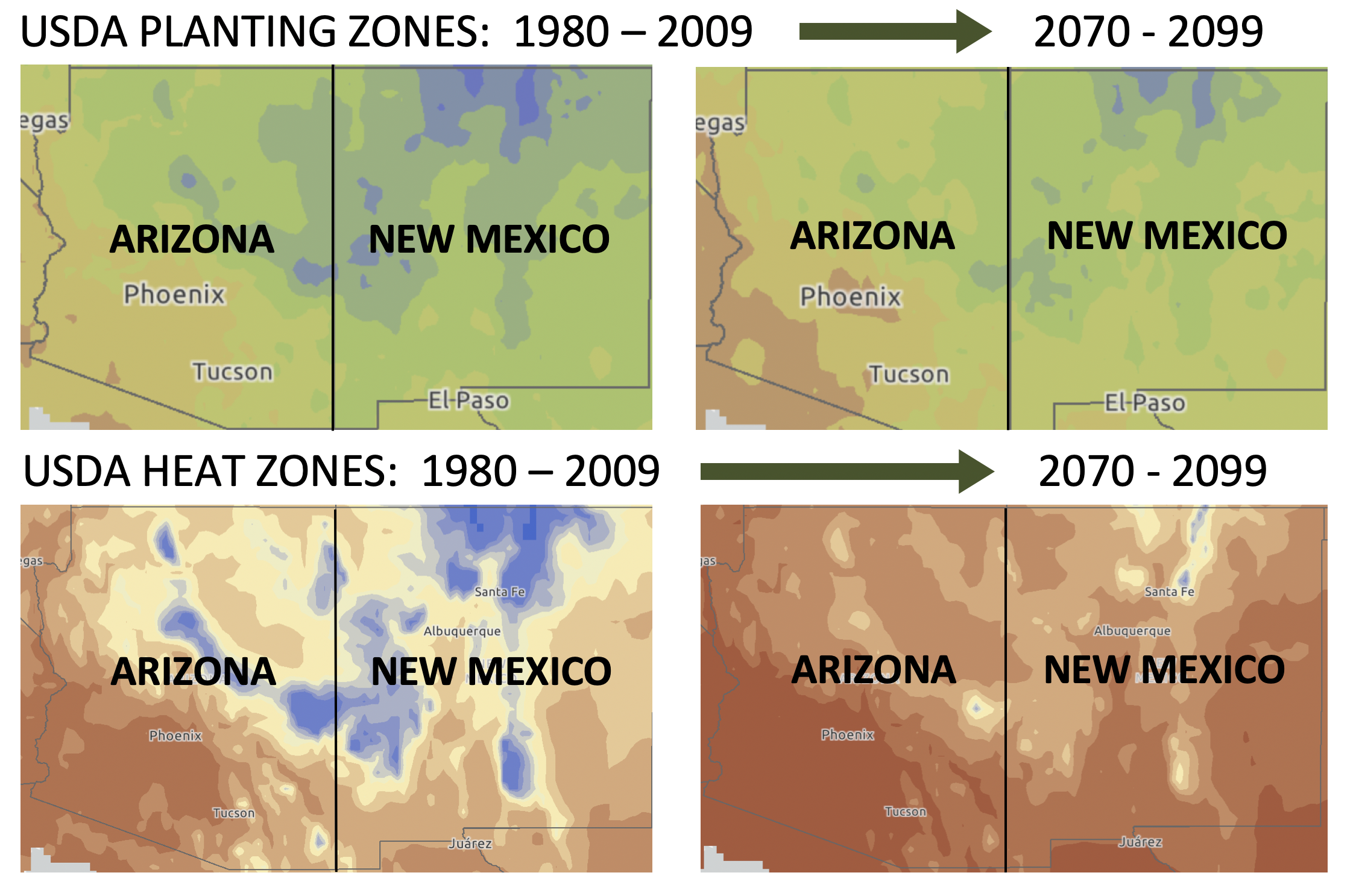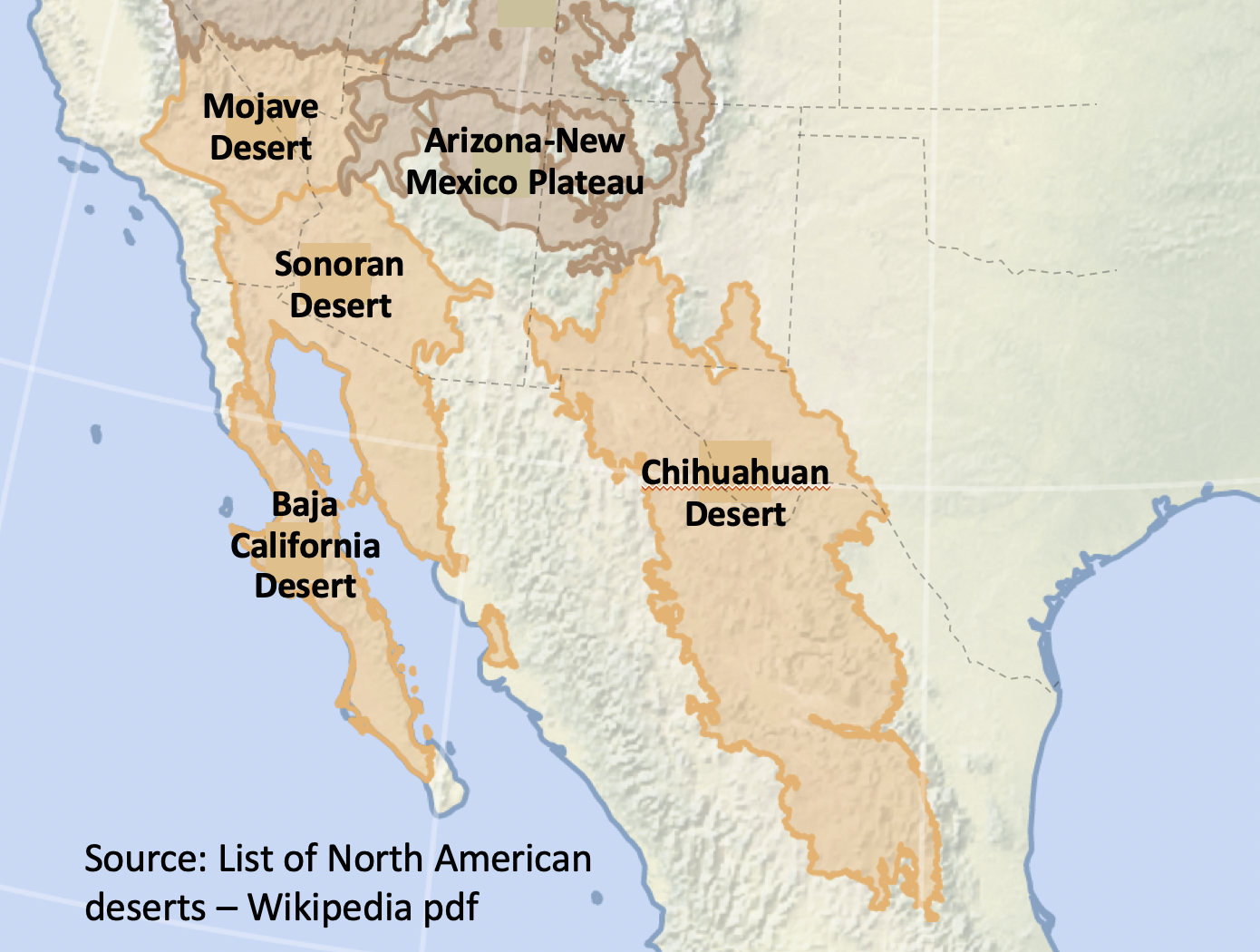OVERVIEW
- Excessive heat and drought are currently impacting trees across Arizona and New Mexico, with much hotter and drier conditions projected for the decades ahead.
To prepare for these conditions, people in many Arizona and New Mexico cities and towns are expanding tree planting efforts to provide more shade and other tree benefits.
- Many tree and tree/shrub species that are native to southwest areas of North America—including the US southwest and northern Mexico—are well adapted to sun, heat and drought.
- Native Tree Profiles of 65 of these species are provided at this website to help people select hardy trees to increase urban climate resilience in Arizona and New Mexico.
- To conserve potable (drinking) water, Native Tree Profiles provide information on tree water needs and harvested water supplies to help support tree growth. These water supplies include rainfall, stormwater runoff, graywater, and condensate water harvested from air conditioning units and other cold-producing machines.
- Tree-related Resources and References below provide links for water harvesting information and other important tree-related topics.
CONFLICTS BETWEEN TREES AND UTILITY LINES
CLIMATE CHANGE PROJECTIONS FOR ARIZONA AND NEW MEXICO
HOW THE 65 TREES SPECIES WERE SELECTED
TREE-RELATED RESOURCES AND REFERENCES
| CONTENTS OF NATIVE TREE PROFILES
|
| TEN BEST PRACTICES FOR USING NATIVE TREES IN URBAN AREAS
Ten Best Practices:
http://tucsoncleanandbeautiful.org/wp-content/uploads/2021/08/FINAL-GUIDEBOOK-7-27-21-40mb.pdf |
| CLIMATE CHANGE PROJECTIONS FOR ARIZONA AND NEW MEXICO
|
TREE-RELATED RESOURCES AND REFERENCES
How to search the internet for information about specific tree species
- Use the scientific name(s) to get the most accurate information—common names may apply to more than one species
- Information on size and other characteristics often varies from source to source, so consult multiple sources to get a broad understanding of the plant
Information about plants, planting, watering, pruning and care for native trees and other plants
- Arizona Cooperative Extension, local offices https://extension.arizona.edu/locations
- New Mexico Cooperative Extension, local offices https://extension.nmsu.edu/county.html
Information including native species lists and plant size, habitat, locations, age and other characteristics
- USDA Forest Service, Fire Effects Information System (FEIS) https://www.feis-crs.org/feis/
- Arizona Native Plant Society, local chapters https://aznps.com/chapters/
- New Mexico Native Plant Society, local chapters https://www.npsnm.org/about/chapters/
- Chihuahuan Desert Plants, comprehensive plant list http://museum2.utep.edu/chih/gardens/list/species.htm
- Nature Study in the Sonoran Desert, A Guide to the Flora and Fauna in Arizona, USA & Sonora, Mexico http://www.arizonensis.org/sonoran/fieldguide/index.html
- Wikipedia: List of flora of the Mojave Desert region https://en.wikipedia.org/wiki/List_of_flora_of_the_Mojave_Desert_region
Information about harvesting rainwater, stormwater, graywater and condensate water to support plants
Rainwater Harvesting for Drylands and Beyond https://www.harvestingrainwater.com/resources/
- Arizona Department of Environmental Quality, Using Gray Water at Home https://www.azdeq.gov/GrayWater
- Condensate Collection and Use Manual for Commercial Buildings, San Antonio, TX https://apps.saws.org/Conservation/commercial/Condensate/docs/SACCUManual_20131021.pdf
- Office of the New Mexico State Engineer, Rainwater harvesting https://www.ose.state.nm.us/WUC/wuc_rainHarvesting.php
- Green Infrastructure Implementation In New Mexico https://www.env.nm.gov/wp-content/uploads/sites/25/2017/06/notice-2017-05-01_Green-Infrastructure-FAQs_Final.pdf
- Arizona Department of Environmental Quality, Green Infrastructure https://azdeq.gov/green-infrastructure-p2
- Stream Dynamics, Inc. Rainwater Harvesting Policy and Legal Issues https://streamdynamics.us/rainwater-harvesting-policy-and-legal-issues
- Stream Dynamics, Inc. Maps of graywater and condensate potential https://www.energy.gov/eere/femp/rainwater-harvesting-regulations-map
State-wide urban and community tree and forest information
- Arizona Department of Forestry and Fire Management, Urban and Community Forestry Program https://dffm.az.gov/forestry-community-forestry/urban-community-forestry
- Arizona Community Tree Council https://www.aztrees.org
- New Mexico Forestry Division, Urban and Community Forestry Program https://www.emnrd.nm.gov/sfd/urban-forestry-program/
- Think Trees New Mexico https://www.thinktreesnm.org/about-us/
- Tree New Mexico https://treenm.org
